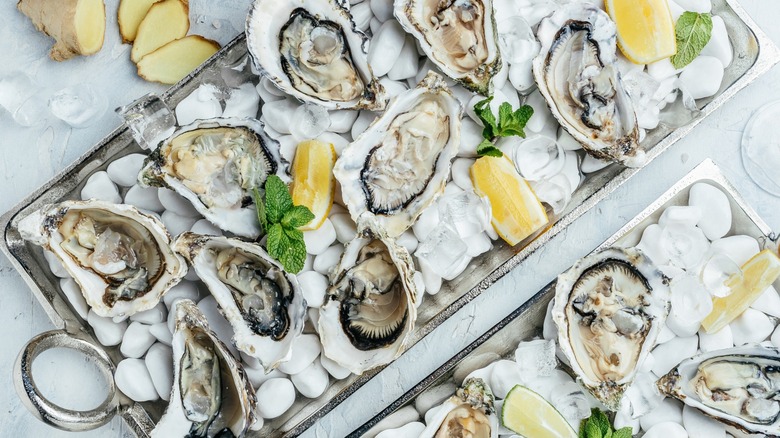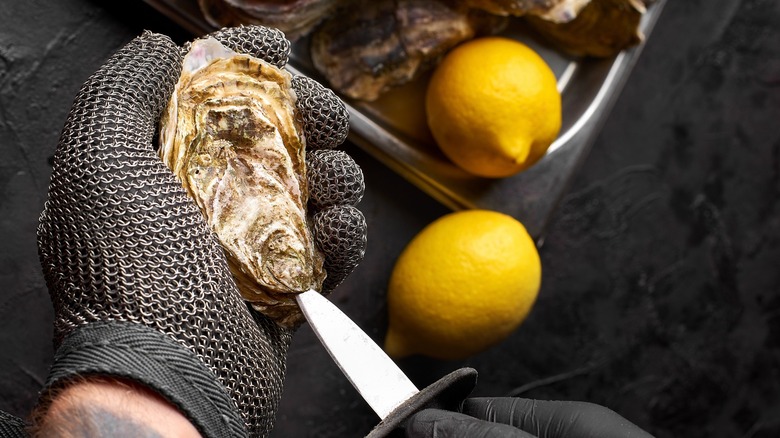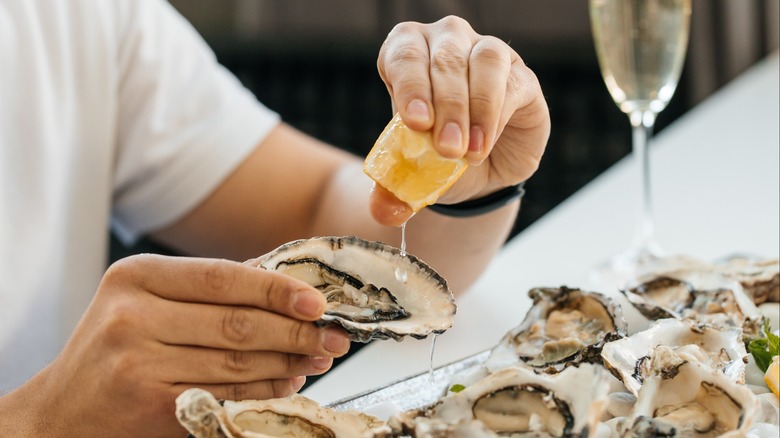It Isn't Actually Safer To Eat Oysters During 'R' Months
In the realm of culinary folklore, few tales have endured as tenaciously as the belief that it's safer to indulge in oysters only during months containing the letter 'R.' Passed down through generations, this not-so-modern myth has shaped the habits of seafood enthusiasts for ages — not to mention the menus of restaurants. However, with modern advancements in food safety practices, it's time to challenge this long-standing tradition and separate fact from fiction, as oysters can now be consumed year-round. No, really!
The roots of this tale trace back to the colonial era when shellfish had a higher risk of spoilage under warm temperatures. Essentially, the vibrio virus associated with the consumption of expired raw shellfish historically affected oysters during the summer months, making them unsafe to eat. Now, some remarkable technological advancements in shellfish aquaculture have made oyster harvesting possible year-round across the globe.
For instance, the emergence of triploid oyster stocks, which breed oysters to not be reproductive, now results in faster growth rates and a reliably delectable flavor profile, even when harvested during warmer weather.
Debunking the oyster myth
Triploid simply refers to the number of chromosome sets an oyster has. Diploid oysters, like most living things, have two sets of chromosomes while the triploid has three. Farmed triploid oysters spend less energy reproducing, yielding more volume and flavor overall. Most oysters are often weak during the months when they mate, but the rare triploid is plump and tasty. They're not GMO (genetically modified organisms), which cannot be found in nature — triploids today are actually a reproduction of a very rare type of oyster that does exist in the wild. This means that — thanks to science — high-quality oysters are now available any time of the year.
So, gone are the days when the 'R' month guideline held sway as a hard-and-fast rule. Today, oyster producers and regulatory agencies have revolutionized safety protocols, ensuring that these little delicacies can be enjoyed year-round without unnecessary worries. By implementing stringent measures such as regular water quality monitoring, comprehensive pathogen testing, and strict adherence to harvesting and handling protocols, as well as the new reproductive strategies of triploid oysters, oyster farms have significantly reduced the risk of bacterial contamination no matter the weather outside.
Indulge in oysters with confidence
With the knowledge that oysters are safe to consume throughout the year, it's time to embrace oysters with confidence. Simply seek out trusted suppliers who adhere to rigorous safety regulations, ensuring that the oysters you savor are held to the highest standards.
While raw oysters remain a beloved delicacy, it's important to note that cooking them thoroughly can provide an extra layer of security, particularly for individuals with compromised immune systems. Whether grilling, baking to make authentic oysters Rockefeller, or incorporating them into flavorful stews and soups, there are numerous ways to enjoy oysters while keeping any concerns at bay.
The notion that oysters are only safe to eat during months containing the letter 'R' is a myth officially debunked. Thanks to advancements in safety practices, oyster aficionados can relish these savory treasures year-round. What is more, by sourcing from reputable suppliers and employing proper cooking methods, one can indulge in oysters' unique flavors and textures without hesitation or outdated constraints.



